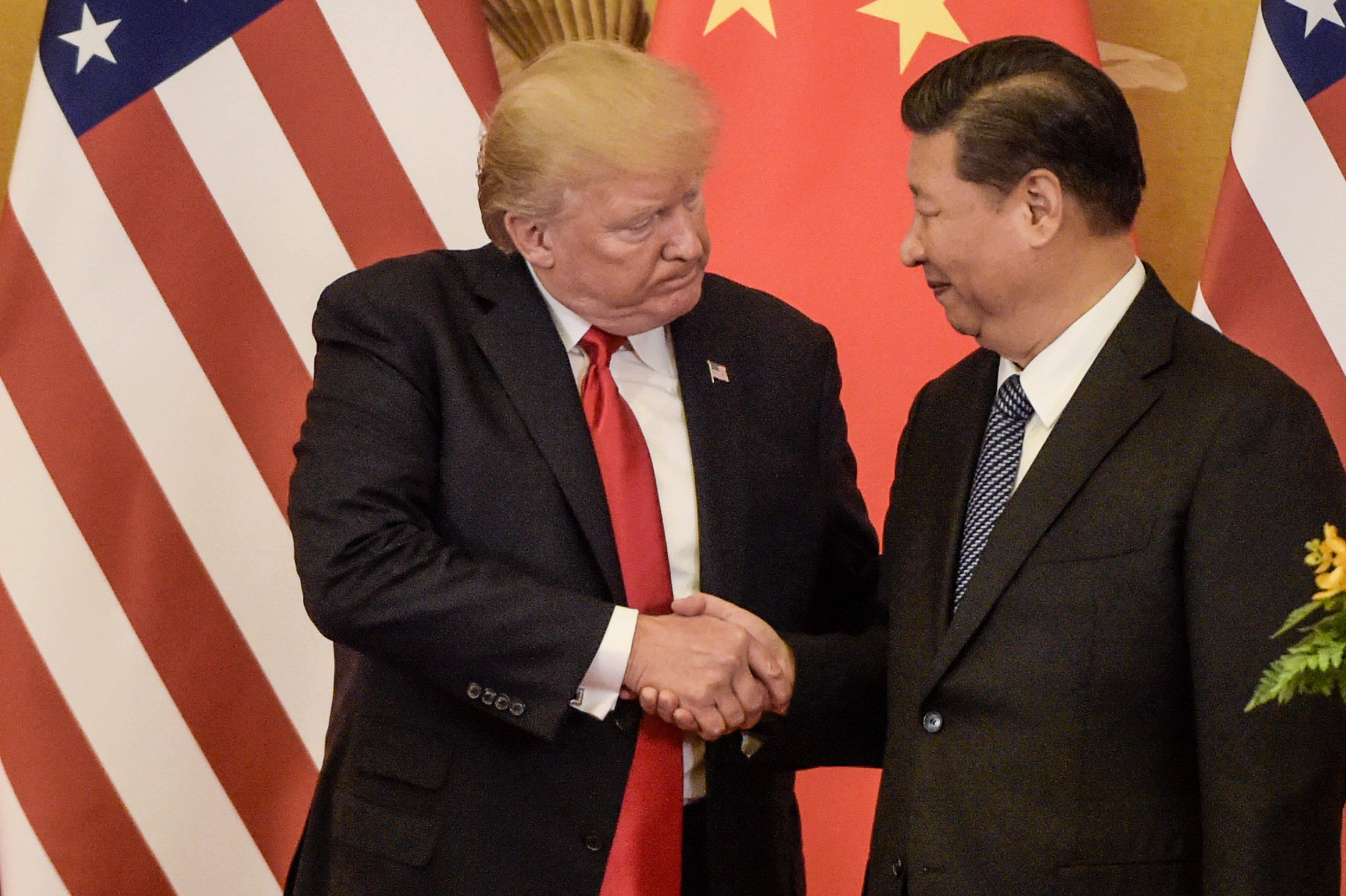
SINGAPORE — As the rivalry between the U.S. and China intensifies, investors and analysts are increasingly worried that the two economies will grow more distant from each other — a development that would make it harder for companies to operate on the international stage.
There have been signs that the world's two top economies have started to go their separate ways, some observers said.
In recent months, Washington began targeting several major Chinese technology companies — such as smartphone-maker Huawei and short-video sharing app TikTok's owner ByteDance — making it more difficult for them to do business in the U.S.
Beijing is also expected to place foreign firms on a blacklist that it's developing, known as the "unreliable entity list."
U.S. President Donald Trump has repeatedly raised the possibility of divorcing the two economies.
However, various data sets suggest the process may be quite challenging — at least for now — as the two countries have grown more connected over the last decade.
U.S.-China trade
A large part of the relationship between the U.S. and China is centered on trade, with the two countries having been each other's major trading partner for years.
Those ties suffered somewhat following a tariff fight that erupted in 2018, but bilateral trade of goods and services still totaled a substantial $636.8 billion last year, according to data by the Bureau of Economic Analysis.
The trading relationship is an uneven one. In merchandize goods trade, the U.S. imports way more from China than it exports to the Asian country; but the reverse is seen in services trade, in which China buys more from the U.S. than the amount it sells, BEA data showed.
Despite touting separation of the two countries, or what some have referred to as "decoupling," Trump has sought to push China to purchase more U.S. agricultural products to appease American farmers who are seen as a crucial voting bloc for him in the upcoming presidential election in November.
Both countries also tried to address their large goods trade imbalance by having China to agree to import more from the U.S. in the so-called phase one trade deal signed earlier this year.
But experts said trade between the two countries will likely deteriorate further this year as relations worsen and the coronavirus pandemic hit global economic activity.
Supply chain linkages
Beyond direct trade, the U.S. and China have also become "increasingly interdependent through rising supply-chain linkages over the past decade," Fitch Ratings said in a report last month.
Supply chains are a complex network of companies that work together to provide raw materials, intermediate parts or expertise in order to produce a final product or service that can be consumed either domestically or globally.
It's hard to gather accurate data that breaks down specific supply chain contributions by each company. However, the OECD — or the Organisation for Economic Co-operation and Development — launched a database in 2013 that provides some insight into how global supply chains work.
Latest available estimates by the OECD showed that in 2015, foreign input accounted for 12.2% — or around $2.2 trillion — of total goods and services consumed in the U.S. China was the largest contributing country of that foreign input, the data showed.
Some manufacturers within the U.S. were especially reliant on China for intermediate input or final products, said Fitch, citing the OECD data. Those include American producers of textiles, electronics, basic metals and machinery, the agency said.
In China, foreign suppliers made up around 14.2%, or $1.4 trillion, of total goods and services consumed within its borders in 2015, according to OECD data. The U.S. was also the largest single contributing country to that foreign input, the estimates showed.
In contrast with U.S. reliance on Chinese input in the manufacturing sector, China is "much more" dependent on American contribution in services, said Fitch.
Investment flows
While trade and supply chain inter-dependency may be difficult to unravel, investment flows between the U.S. and China have dropped as bilateral tensions escalate.
Over the last three years, the total value of foreign direct investment and venture capital deals between the countries have been falling, according to data by Rhodium Group.
A "notable trend is the drop in Chinese acquisitions of US technology assets," the company said in its latest report this month. Meanwhile, U.S. investments in China have been relatively "more resilient," it added.
Many U.S. businesses operating in China said they're not yet looking to move out, noted Fitch.
The ratings agency cited a survey conducted last year by the American Chamber of Commerce in China, in which 83% of respondents said they're not considering relocating manufacturing or sourcing outside China. That proportion of companies intending to remain in China has risen compared to past surveys, from 80% in 2018 and 77% in 2017, said Fitch.
"much" - Google News
September 29, 2020 at 06:45AM
https://ift.tt/3cD7Z0S
5 charts show how much the U.S. and Chinese economies depend on each other - CNBC
"much" - Google News
https://ift.tt/37eLLij
Shoes Man Tutorial
Pos News Update
Meme Update
Korean Entertainment News
Japan News Update
Bagikan Berita Ini















0 Response to "5 charts show how much the U.S. and Chinese economies depend on each other - CNBC"
Post a Comment